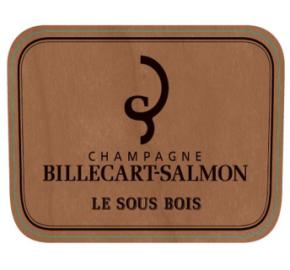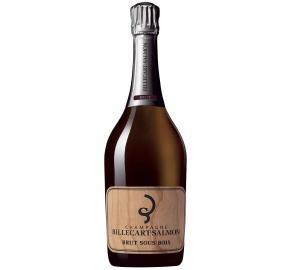Billecart-Salmon - Brut Sous Bois NV
- Producer Billecart Salmon
-
Blend
Chardonnay
Pinot Meunier
Pinot Noir - Country France
- Region Champagne
- UPC 3 113941 208262
Log in to view pricing and order online
Don't have an account? Register here
Item# 13573-NV
Wine Advocate
92pt
Tasting notes
A radiant yellow crystalline appearance with golden glints brought to life by a luminous stream of persistent, fine bubbles. There is a rich olfactory impact which is harmoniously expressed (dried fruits, fresh citrus and white flesh fruits) and coupled with finely buttered seductive notes. A burst of flavors (notes of grilled brioche and toffee) thanks to the distinguished power and maturity which is a mark of any great wine of Champagne. Its strength of character and integrity make it an ideal accompaniment to poultry dishes or mushrooms.
Description
Sous Bois literally means under wood and that is what Billecart-Salmon have done with their latest release the Brut Sous Bois. The wines used to make the final blend have all been vinified entirely in oak in a return to the original way the Champenois used to make their champagne. Vinifying and ageing in oak gives the wines extra body and texture as well as toasty notes. The nose shows enticing aromas of ripe apples cinnamon and brioche. On the palate this shows as a rich and well-balanced wine with a wide range of flavors including apples, grapefruit, yeast, toast and a hint of toffee. The finish is long and persistent. It’s made of Premier and Grand Cru Chardonnay from the Côte des Blancs; Premier and Grand Cru Pinot Noir from the Montagne de Reims, Aÿ and Mareuil-sur-Aÿ; and Pinot Meunier from the right bank of the Vallée de la Marne. Vinification and ageing take place in oak casks at low temperature, there’s partial malolactic fermentation, around one-third reserve wines and 6 years ageing on lees.
One third of each of the main Champagne varieties is used and fermented in old barrels, then aged for six years on lees. 7 g/liter dosage. The using oak with an average age of 15 years old doesn’t add any flavor, but the barrel fermentation of the base wine gives a real supple, elegant texture to this wine. Beautiful and complex.
Estate
The Champagne firm of Billecart-Salmon in Mareuil-sur-Äy was established in 1818 when Niçolas François Billecart married Elizabeth Salmon; it has remained independently controlled by the family ever since, even though the Frey Group have owned a 45 percent share since 2005. Today the house is managed by brothers François and Antoine Roland-Billecart, who represent the sixth generation. Production averages 1.7 million bottles per year.
Technical data
Dosage : 7g/l
Vinification and ageing take place in oak casks at low temperature
Partial malolactic fermentation
From 30% to 35% reserve wines
Ageing on lees: 6 to 7 years
Ageing potential: 6 to 8 years
Vinification and ageing take place in oak casks at low temperature
Partial malolactic fermentation
From 30% to 35% reserve wines
Ageing on lees: 6 to 7 years
Ageing potential: 6 to 8 years


